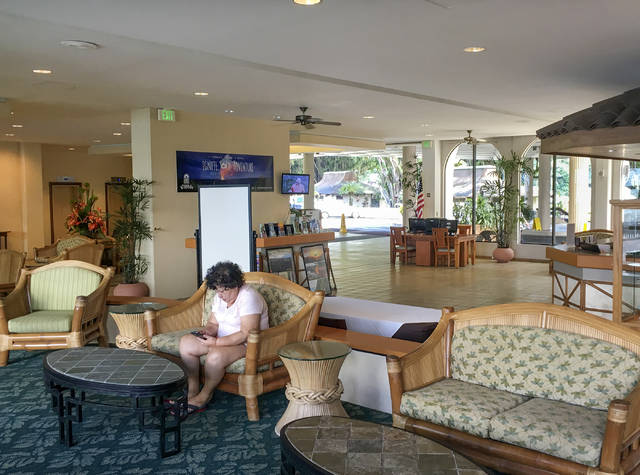The impact of the Kilauea eruption on the Big Island’s tourism industry continues to be felt as official tourism data from September indicates a fourth consecutive month of declining hotel visits.
Preliminary data from the Hawaii Tourism Authority released Monday reports that Big Island hotels suffered an 8.9 percent decrease in occupancy rates in September this year compared to September 2017. In September 2017, island hotels had an occupancy rate of 67.6 percent, but during September of this year saw only 58.7 percent.
While the data indicate that the average daily room rates increased nominally in September — up 0.9 percent to $207.77 compared to last year — the island’s hotels experienced a 12.5 percent drop in average revenue per available room, declining to $121.90.
Ross Birch, president of the Island of Hawaii Visitors Bureau, said hotel rate adjustments account for the increase in average daily rates, but the lower occupancy means those higher rates are spread thinner.
This year to date, hotel occupancy rates have dipped slightly below last year, decreasing from 75 percent by this point in 2017 to 73.9 percent so far this year. However, average daily rates and revenue per available room remain higher than last year’s by 5.6 percent and 4.1 percent, respectively.
While a total number of visitors to the island in September is not yet available, 12 percent fewer people visited the Big Island this August than in August 2017, a difference of almost 20,000.
This continues a trend of weaker visitor rates that began in May with the Kilauea eruption in lower Puna. May saw 1.6 percent fewer visitors, June had 4.8 percent fewer and July 12.7 percent fewer.
Despite the decline, the year-to-date visitor numbers as of August — 1.218 million visitors — are still higher than the 2017 year-to-date numbers from the same period — 1.196 million — thanks to strong growth in the early months of the year.
Similarly, year-to-date expenditures remain ahead of expenditures at the same time last year by nearly $100 million, although the gap between the two years has shortened somewhat since May.
“If we have another couple bad months, we’ll start to slip behind last year,” Birch said.
On the other hand, August of this year saw cruise ship traffic pull out of a decline, with 7.9 percent more visitors arriving by cruise ship than in August 2017, a significant improvement from July when 10.4 percent fewer cruise ship visitors arrived than in the previous July. Birch said the increase in cruise visitors is tied to a 5 percent increase in cruise ship traffic that occurred at the same time “right on schedule.”
“I think it’s gradually improving, thanks to airline seats,” Birch said.
Scheduled flights to Kona will have 80,000 available seats in November, an increase of 20.9 percent, or 15,000 seats, from last November, according to Hawaii Tourism Authority data.
Scheduled available seats flying into Hilo will be down 15.4 percent from last year, but that accounts for only 664 passengers in total, a fraction of the total air visitors to the island.
Birch said he hopes the reopening of Hawaii Volcanoes National Park in September will lead to an increase in day-trippers visiting the island from Oahu or Maui, but added that because only overnight stays are reflected in the Hawaii Tourism Authority data, that activity will not necessarily be reflected in future data sets.
Email Michael Brestovansky at mbrestovansky@hawaiitribune-herald.com.

